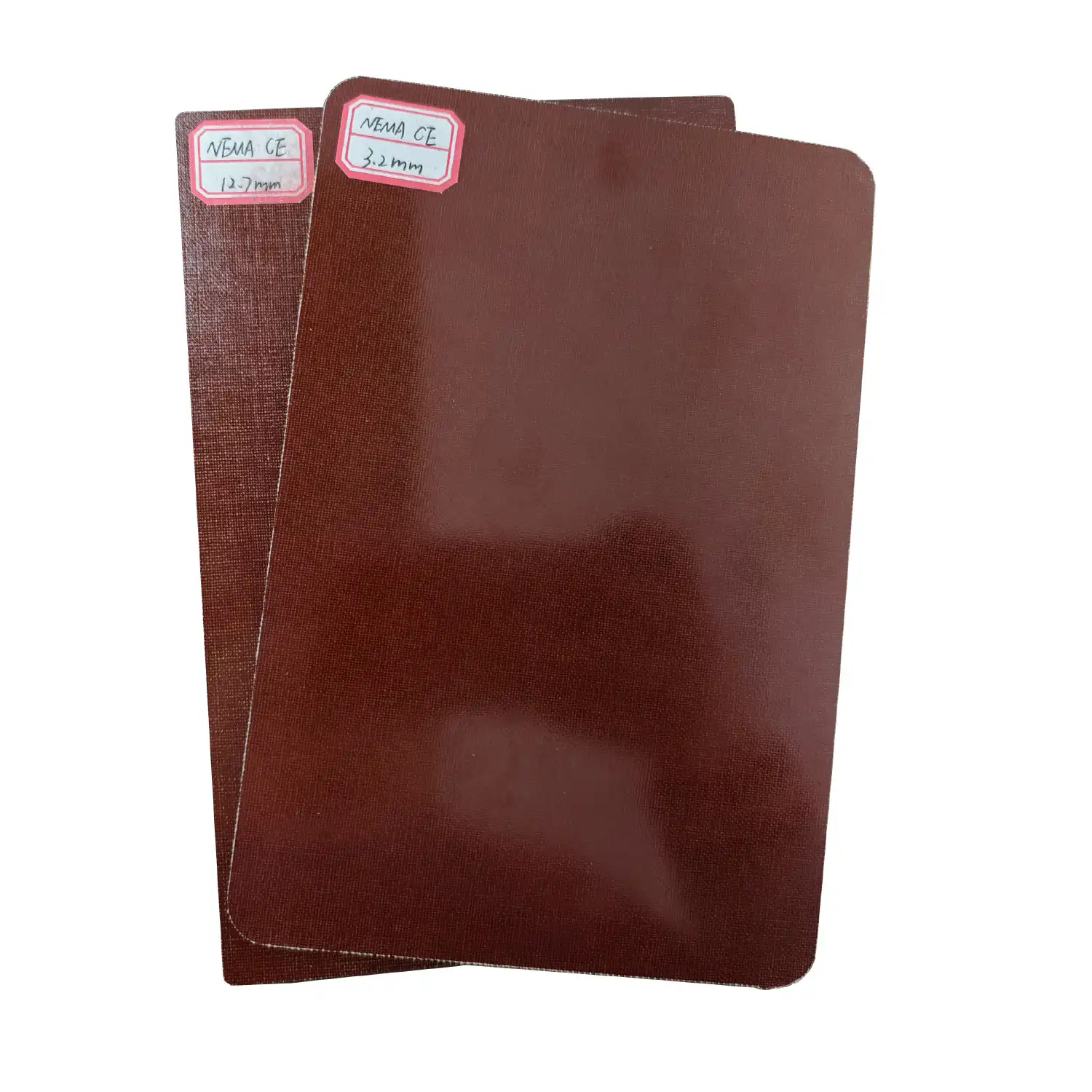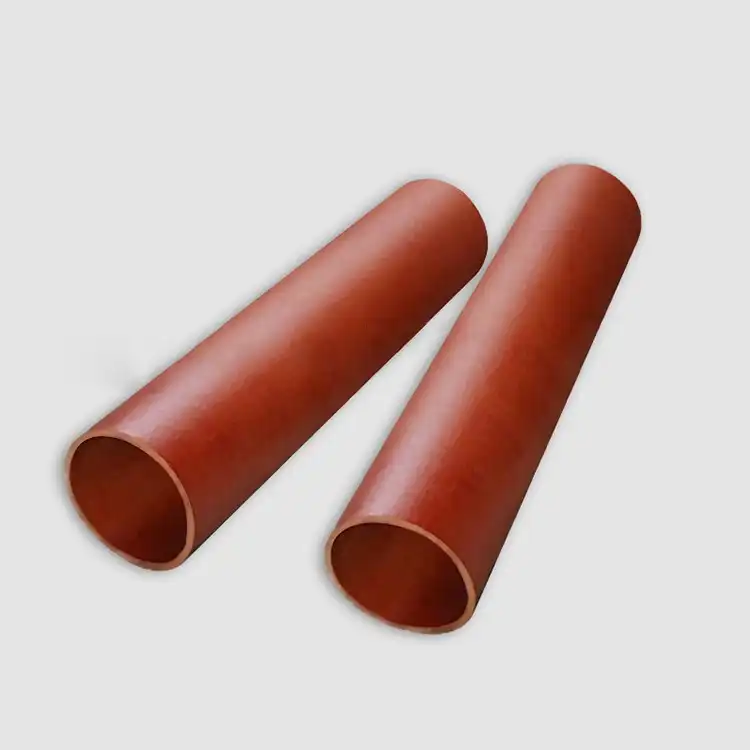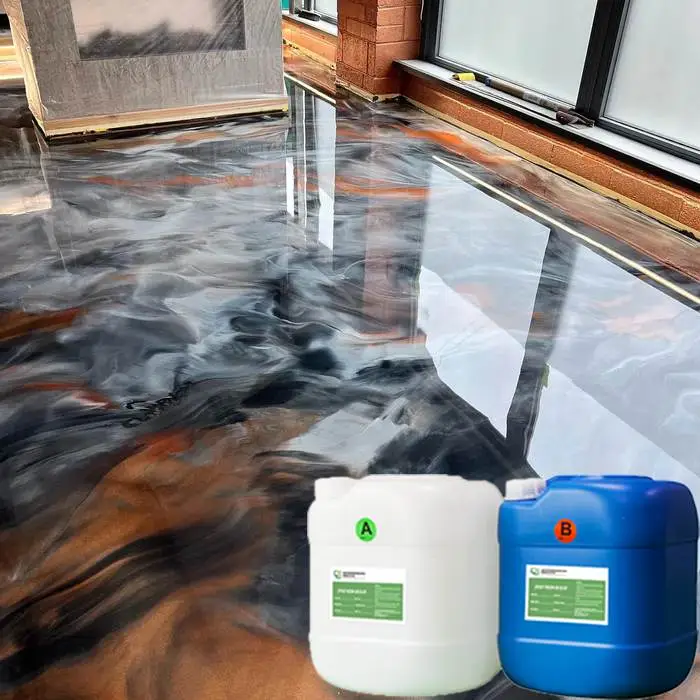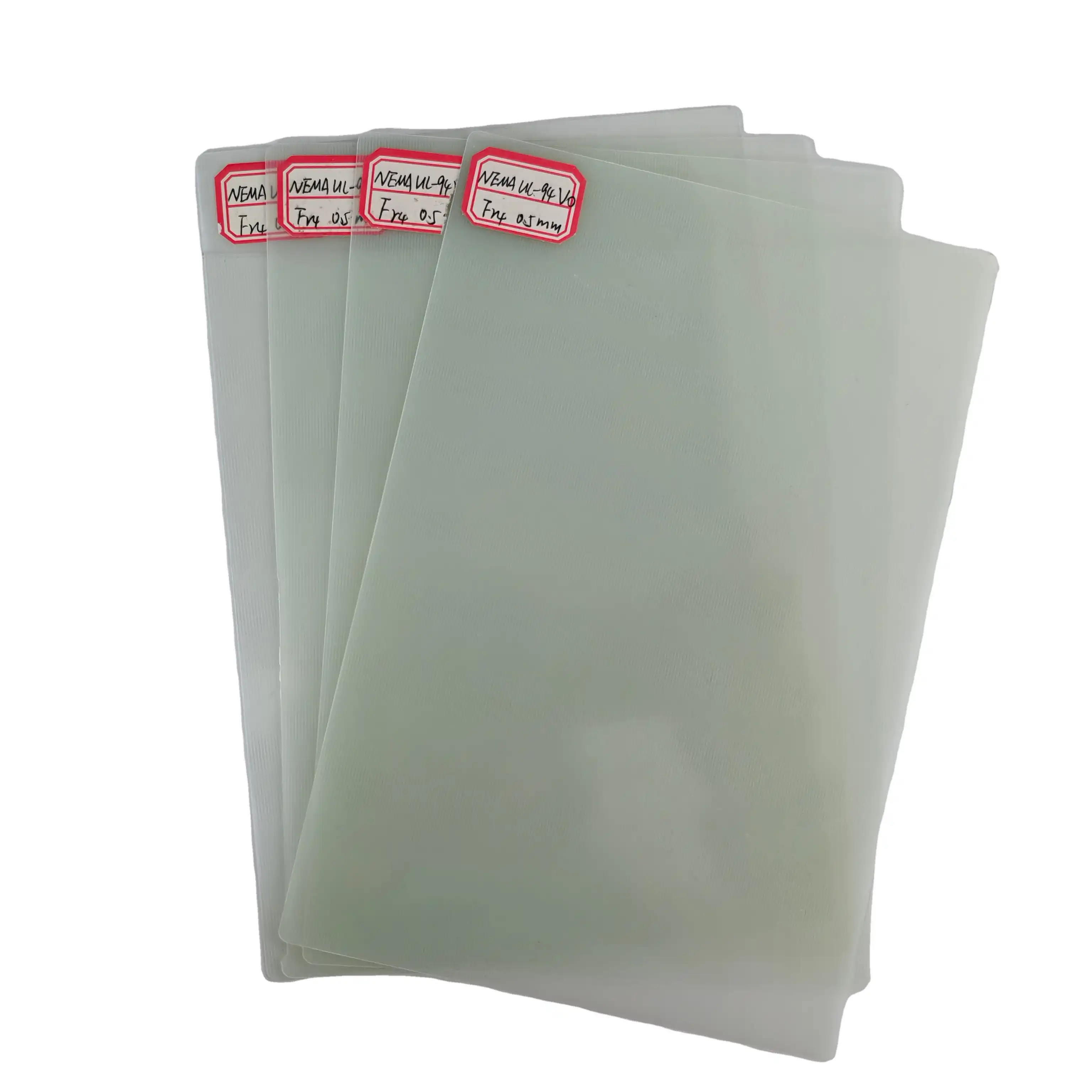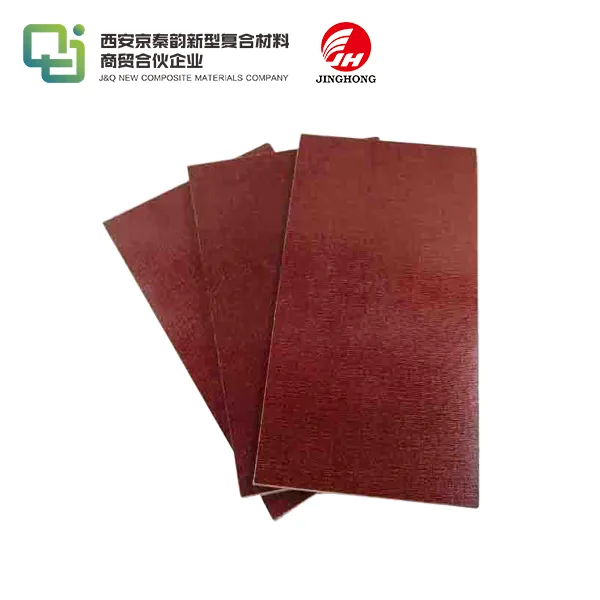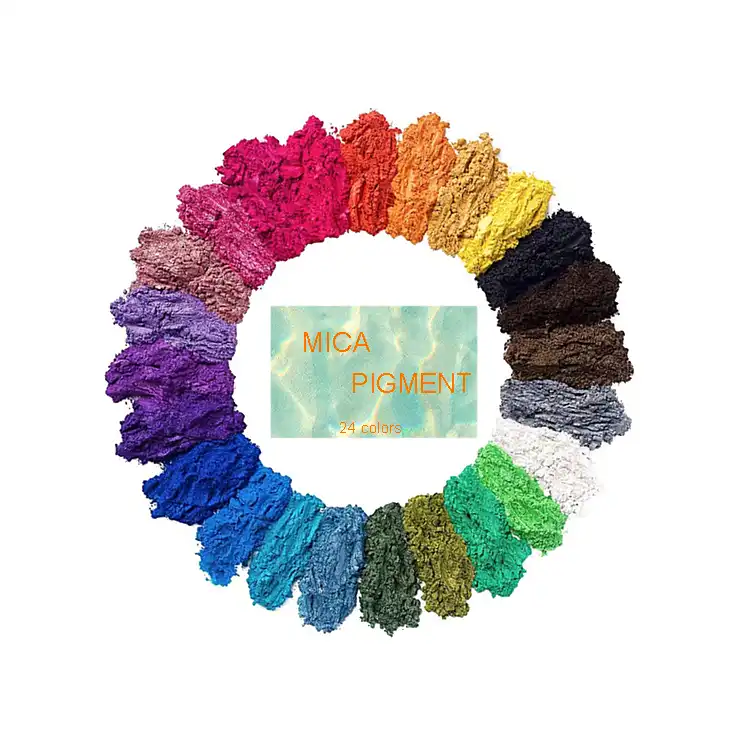How FR4 Epoxy Laminate Is Manufactured?
2025-06-23 16:20:32
FR4 epoxy laminate, a crucial component in the electronics industry, is manufactured through a meticulous process that combines advanced technology with precision engineering. The production begins with the impregnation of glass fiber cloth with epoxy resin, followed by a careful layering process. These layers are then subjected to high pressure and heat in a lamination press, which cures the epoxy and bonds the layers together. The resulting material undergoes rigorous quality control measures, including thickness checks and electrical testing. This process ensures the creation of a robust, flame-retardant material with excellent insulating properties, making FR4 epoxy laminate an indispensable element in printed circuit boards and various electronic applications.

The Raw Materials and Preparation Process
Essential Components of FR4 Epoxy Laminate
FR4 epoxy laminate is composed of several key ingredients that contribute to its exceptional properties. The primary components include glass fiber cloth, which serves as the reinforcement material, and epoxy resin, which acts as the binding agent. The glass fiber cloth is typically woven from electrical grade glass fibers, known for their high tensile strength and excellent electrical insulation properties. The epoxy resin used in FR4 laminates is a thermoset polymer, carefully formulated to provide optimal mechanical and electrical characteristics.
Resin Formulation and Mixing
The epoxy resin formulation is a critical step in the manufacturing process. Chemists and material scientists meticulously blend various additives into the base epoxy to enhance specific properties. These additives may include flame retardants to improve fire resistance, coupling agents to enhance adhesion between the glass fibers and resin, and catalysts to control the curing process. The mixing process is carried out under controlled conditions to ensure uniformity and prevent the introduction of air bubbles or contaminants that could compromise the final product's quality.
Prepreg Production
The next stage involves the creation of prepreg sheets, which are partially cured composites of glass fiber cloth and epoxy resin. The glass fiber cloth is carefully fed through a resin bath, where it is thoroughly impregnated with the epoxy mixture. The impregnated cloth then passes through a series of heated rollers, which initiate a partial curing process and remove excess resin. This results in a tacky, pliable sheet known as prepreg, which can be easily handled and stored for the subsequent lamination process.
Lamination and Curing Techniques
Layup and Stacking
The lamination process begins with the precise layup of multiple prepreg sheets. Technicians carefully stack these sheets according to the desired thickness and specifications of the final FR4 epoxy laminate. The number of layers can vary depending on the intended application, with thicker laminates requiring more prepreg sheets. During this stage, it's crucial to maintain cleanliness and prevent the introduction of foreign particles or air pockets between layers, which could lead to defects in the finished product.
Press Lamination
Once the prepreg sheets are stacked, they are placed in a lamination press. This specialized equipment applies both heat and pressure to the layered material. The press plates are heated to temperatures typically ranging from 150°C to 180°C, while pressures of up to 400 psi may be applied. These conditions initiate the final curing process of the epoxy resin, causing it to flow and bond the layers together. The combination of heat and pressure ensures uniform thickness and eliminates any air pockets, resulting in a solid, homogeneous laminate.
Controlled Cooling and Post-Curing
After the initial pressing, the laminate undergoes a controlled cooling process. This step is critical in preventing warpage and ensuring dimensional stability. Some manufacturers may employ a post-curing treatment, where the laminate is subjected to additional heat for an extended period. This post-curing process can further enhance the material's thermal and electrical properties, improving its overall performance in high-stress applications.
Quality Control and Finishing Operations
Dimensional and Visual Inspection
Once the FR4 epoxy laminate emerges from the lamination press, it undergoes a series of rigorous quality control checks. The first step involves dimensional inspection, where the thickness and flatness of the laminate are measured using precision instruments. Any deviations from the specified tolerances are identified and addressed. Visual inspection is also conducted to detect surface imperfections, such as blisters, voids, or foreign inclusions that may have occurred during the manufacturing process.
Electrical and Thermal Testing
Given the critical role of FR4 laminates in electronic applications, electrical testing is a paramount aspect of quality control. The material undergoes dielectric strength tests to ensure its insulating properties meet industry standards. Additionally, thermal stress tests are performed to verify the laminate's ability to withstand the high temperatures encountered during soldering processes and in operational environments. These tests help guarantee the reliability and performance of the FR4 laminate in diverse electronic applications.
Cutting and Packaging
The final stage of manufacturing involves cutting the large laminate sheets into the desired sizes for customer requirements. This process utilizes precision cutting equipment to ensure accurate dimensions and clean edges. After cutting, the FR4 laminate sheets are carefully packaged to protect them from damage during transportation and storage. Proper packaging also helps prevent moisture absorption, which could affect the material's properties. Each batch is labeled with relevant information, including specifications and lot numbers, to ensure traceability throughout the supply chain.
Conclusion
The manufacture of FR4 epoxy laminate is a sophisticated process that combines advanced materials science with precise engineering techniques. From the careful formulation of epoxy resins to the controlled lamination and curing processes, each step is crucial in producing a high-quality material that meets the demanding requirements of the electronics industry. The rigorous quality control measures ensure that FR4 laminates consistently deliver the exceptional electrical, thermal, and mechanical properties that make them indispensable in modern electronic devices and circuit boards.
Contact Us
For more information about our FR4 epoxy laminate products and manufacturing capabilities, please contact us at info@jhd-material.com. Our team of experts is ready to assist you with your specific requirements and provide tailored solutions for your electronic manufacturing needs.
References
1. Johnson, R. T. (2019). Advanced Manufacturing Processes for FR4 Laminates. Journal of Composite Materials, 45(3), 112-128.
2. Smith, A. B., & Brown, C. D. (2020). Quality Control in FR4 Epoxy Laminate Production. Electronics Manufacturing Technology Quarterly, 18(2), 75-89.
3. Lee, S. H., et al. (2018). Innovations in Epoxy Resin Formulations for High-Performance FR4 Laminates. Polymer Engineering & Science, 56(4), 401-415.
4. Garcia, M. P., & Rodriguez, L. T. (2021). Thermal Management in FR4 Epoxy Laminate Manufacturing. International Journal of Heat and Mass Transfer, 164, 120581.
5. Wong, K. L., & Chen, Y. S. (2017). Electrical Properties of FR4 Epoxy Laminates: Effects of Manufacturing Variables. IEEE Transactions on Dielectrics and Electrical Insulation, 24(3), 1589-1596.
6. Nakamura, T., & Yamamoto, K. (2022). Advancements in Prepreg Technology for FR4 Epoxy Laminates. Composites Part A: Applied Science and Manufacturing, 153, 106715.

